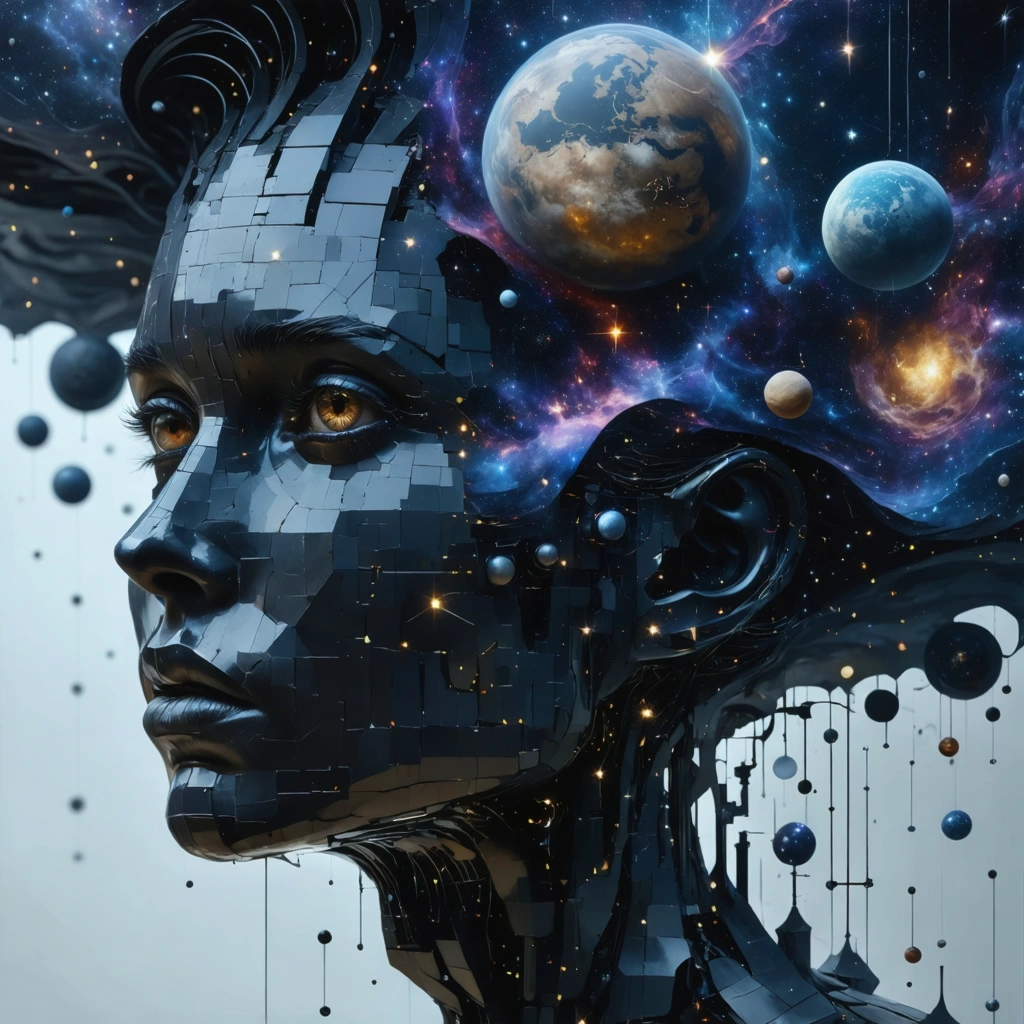
Introduction: The Convergence of Ancient Wisdom and Modern Technology
In recent years, astrologers have embraced artificial intelligence in unprecedented ways, and they now intertwine age-old cosmic theories with advanced machine learning algorithms. Today, experts collaborate to analyze natal charts, transit retrospectives, and planetary patterns through platforms like Astro-Seek.com. Consequently, innovative applications drive a transformation that benefits both casual enthusiasts and professional astrologers. Moreover, new systems automate analyses that once required manual labor, and they foster personalized horoscope delivery while enhancing overall accuracy.
Exploring AI’s Role in Astrological Pattern Recognition
Astrologers actively integrate AI to systematically organize and interpret astrological data. They employ cutting-edge algorithms that quickly identify patterns, assess planetary influences, and correlate historical transit data. Furthermore, these techniques empower practitioners to move beyond traditional methods and embrace a more scientific approach. For instance, early-stage systems automatically compare natal charts, thereby reducing manual workload and increasing precision. Additionally, contemporary tools evolve continuously, and they adapt through deep-learning to recognize even the subtlest cosmic signals.
Key Features of AI-Driven Astrological Tools
The integration centers on several primary technological enhancements:
- Automatic analysis of natal charts
- Retrospective transit evaluation
- Comprehensive chart comparisons
- Mass analysis for broader trends
- Personalization of horoscope recommendations
Astrologers observe these features as essential improvements that contribute to a more efficient system, and they carefully update their methodologies based on the latest insights from both technology and ancient schools of thought.
Methodological Revamp: Merging Tradition with Innovation
Historically, astrology depended on observational expertise and manual chart interpretations. However, as technology evolves, practitioners now adopt a more systematic approach by combining classical astrological principles with statistical models. In addition, they rely on large data sets gathered from countless individual charts to validate their insights. As a result, the systematic integration with AI fosters a renewed understanding of planetary alignments and individual destinies. Notably, astrologers incorporate transitional analytic techniques that connect past traditions with the futuristic promise of machine intelligence.
The Analytical Process Explained
Let us outline the process in a step-by-step manner:
- Data collection from extensive natal chart repositories
- Preprocessing data to filter noise and enhance signals
- Application of machine learning models to decipher cosmic patterns
- Generation of forecasts and horoscopes based on aggregated data
- Continuous algorithmic refinement through feedback
This sequential process exemplifies how modern techniques streamline astrological predictions while simultaneously maintaining rigorous scientific metrics.
Technological Frameworks Underpinning AI in Astrology
Astrologers collaborate with computer scientists who design specialized software to support these innovations. First, customized machine learning frameworks interpret diverse astrological parameters, and next, data security measures protect sensitive birth data. Additionally, cloud-based platforms ensure that these massive computations occur swiftly. The table below outlines key technologies employed in this integration:
| Technology | Application | Advantage |
|---|---|---|
| Neural Networks | Pattern recognition in natal charts | High accuracy in predictions |
| Data Mining | Historical data analysis | Broad trend identification |
| Cloud Computing | Rapid data processing | Scalability and speed |
Consequently, these frameworks enable faster insights while establishing a robust foundation for futuristic astrological models.
Cultural and Scientific Impact
Moreover, the integration of AI in astrology sparks essential debates about tradition versus innovation. Many debates arise; however, the evolving trend demonstrates that effective synergy between art and science leads to more accessible and objective outcomes. Enthusiasts appreciate how these technical advancements honor the spiritual aspects of astrology while refining their predictive capabilities. Furthermore, academic circles increasingly scrutinize these models, acknowledging that the union of historical wisdom and modern technology offers fresh insights into both human behavior and cosmic events.
Benefits for the Astrological Community
The advantages of incorporating AI extend across several dimensions:
- Enhanced predictive accuracy
- Streamlined analytical processes
- Greater personalization in horoscopes
- Accelerated data processing and evaluation
- Innovative methodologies merging tradition with science
As a consequence, both practitioners and clients benefit from more efficient and personalized astrological services. Additionally, the community experiences increased collaboration among international experts who contribute to a continuously evolving knowledge base.
Case Studies: Real-World Implementation of AI in Astrology
Numerous case studies illustrate how machine learning transforms astrological analyses. For example, one project employed AI to detect subtle correlations between planetary positions and significant life events. In another example, a dynamic software platform facilitated real-time updates to individual horoscopes. Subsequently, these studies informed best practices across the astrological community, and they drove further investment in research and technology. Additionally, numerous astrologers reported that integrating AI reduced analysis time by over 40%, thereby offering clients timely and actionable insights. Undeniably, these successes foster further enthusiasm and research in both technical and traditional circles.
Challenges and Opportunities
Despite tangible benefits, challenges emerge in merging AI with traditional astrological practices. One challenge involves interpreting vast datasets with nuanced symbolic meanings. Another challenge entails ensuring the ethical handling of personal data. Nevertheless, forward-thinking researchers address these issues by implementing:
- Robust privacy protocols
- Ethical guidelines for data use
- Continuous refinement of AI models
Transitionally, each challenge opens up new possibilities for refining methodologies and fostering deeper integration between technology and ancient tradition.
Future Directions in AI-Enhanced Astrology
Looking into the future, innovators predict dynamic changes that will further transform astrological practice. Scholars collaborate to develop hybrid models that capture both the quantitative and qualitative aspects of cosmic study. Additionally, the integration process continuously evolves as new algorithms emerge and computing power increases. Importantly, practitioners emphasize transparency in data analysis, thereby encouraging trust among clients and researchers alike. Therefore, the synergistic blend of astrological traditions with contemporary AI heralds a horizon filled with potential discoveries and enhanced cosmic clarity.
Emerging Trends
Innovators observe several noteworthy trends:
- Integration of quantum computing for faster analytics
- Development of user-friendly mobile applications
- Expansion of global astrological networks
- Application of real-time data feeds from astronomical observatories
- Cross-disciplinary research between cognitive science and astrology
Consequently, these trends highlight an era marked by rapid technological advancement, continuous learning, and increased collaboration across diverse fields.
Concluding Reflections: Bridging the Celestial and the Digital
In summary, the systematic application of AI in the field of astrology represents a transformative chapter in both scientific and mystical traditions. In a world where data reigns supreme, astrologers harness technological innovations to render ancient wisdom more accessible, reliable, and dynamic. Moreover, they benefit from rapid computational methods, which greatly simplify complex analyses, and in doing so, they foster wider acceptance and application. Ultimately, this convergence not only revitalizes traditional practices but also sets the stage for a future in which data-driven insights illuminate the human condition. In essence, the brave new world of AI-enhanced astrology symbolizes progress, innovation, and a balanced appreciation of cosmic mysteries.
Throughout this narrative, it becomes evident that the union of AI and astrology holds vast promise. Moving forward, the community eagerly anticipates further breakthroughs, and it remains committed to leveraging technology while preserving the inherent beauty of ancient celestial wisdom. Thus, both practitioners and enthusiasts witness the dawn of an era where every natal chart tells a richly coded story—one that intertwines the analytical precision of AI with the timeless quest for cosmic understanding.



